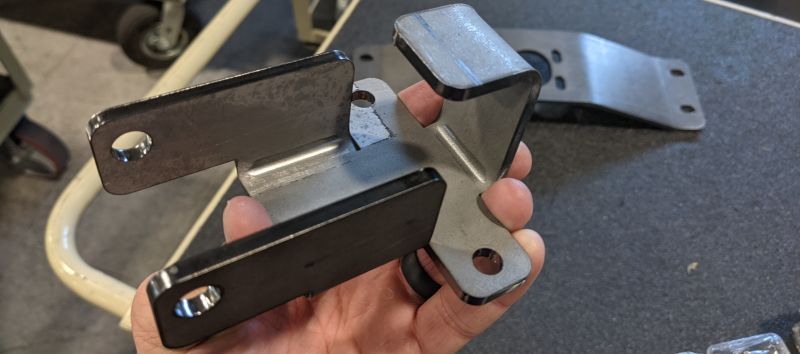Sheet Metal Has an Image Problem

I still remember when, as a young electrical engineer, I discovered what you could do with flat metal sheet and a CNC laser. My first laser-cut metal project was a custom mechanical clock with steel gears ("wheels" in the horology world) and a brass escapement.
Add bending, and an entire world of design possibilities opened up. Professionally, that meant custom aluminum heatsinks, enclosures for electronics, brackets for sensors, and dozens of other possibilities.

But in spite of the broad possibilities, sheet metal never rose to prominence as my first choice. 3D printing, CNC machining, and even injection molding was often preferable to sheet metal, in spite of the fact that sheet metal was often the best option.
Why? Prices were high, lead-times were large, and the industry was fragmented and unpredictable. I'd send a quote request to five local shops, hear back from one of them three days later, and get crickets from the rest unless I called or emailed to follow up. Pricing was completely unpredictable - one shop would bid $150 for a single simple bracket, and another $500. Lead-times ranged anywhere from a few weeks to three months.
In contrast, I could get a 3D printed bracket at a lower cost and faster pace, from any of ten different companies online. Sheet metal is often the best choice, but not if it takes a week to get a price and a month to get a part.
Other peers have expressed similar discontent with sheet metal. Engineers, designers, purchasing managers, and hobbyists have all expressed frustration with the status-quo in the metal fabrication industry.
That's unfortunate, because sheet metal is very often the best possible way to make a metal part. 3D printing might be great for rapid prototyping, but almost nobody 3D prints actual products - it's too costly and takes too long. For all its hype, 3D printing isn't going to change production in the immediate future. CNC machining is also an option, but laser-cutting and bending a bracket is significantly faster and cheaper than hogging out steel from raw billet (imagine trying to cut the part at the top of this article out of solid billet steel). And injection molding really isn't a prototyping tool at all, although it's becoming faster and cheaper (ironically, enabled by 3D printing for short-life molds).
Sheet metal is the manufacturing technology of choice for a host of products. When you understand what is possible and have easy access to rapid services at reasonable prices, it changes everything. You'll start modifying designs to accommodate sheet metal because it's literally the best way to build something.
An Industry Behind the Times
I'm personally convinced that poor ordering experience has hurt the entire metal fabrication industry. Sheet metal is often the best choice, but not if it takes a month to get a prototype. If the ordering process makes you want to pull your hair out, you'll gravitate toward other options, even if sheet meet would ostensibly be better-suited to the project.
Metal fab is an old and respectable industry. People have been cutting and forming metal for centuries. Unfortunately, sheet metal industries have failed to keep pace with technological change, and so has garnered an image as a slow, stodgy, expensive way to make things. Shops operate today in a way that would have been acceptable in the 70s.
That has to change, and it will. OSH Cut isn't the only company applying modern software to metal fabrication, and we hope to see even more companies make the change. That might sound disingenuous. Why would OSH Cut want to see more competitors in the space? Simply put, this isn't a zero-sum game. As more shops figure out processes to enable faster quoting, shorter lead times, and better prices, it will attract more customers to the industry at large. Better ordering experience will increase demand across the board, and everyone will benefit. Including OSH Cut.
My expectation is that within 10 years, shops that fail to innovate and improve the customer experience will be in dire straights. Times are changing, and we invite everyone to get onboard.